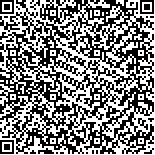|
| 引用本文: | 杜美荣,李凤雪,方建光,高亚平,房景辉,蒋增杰,王同勇.桑沟湾养殖生态系统微食物环对长牡蛎(Crassostrea gigas)碳需求的贡献.海洋与湖沼,2019,50(6):1334-1342. |
| |
|
| |
|
|
| 本文已被:浏览 2164次 下载 1594次 |

码上扫一扫! |
|
|
| 桑沟湾养殖生态系统微食物环对长牡蛎(Crassostrea gigas)碳需求的贡献 |
|
杜美荣,李凤雪,方建光,高亚平,房景辉,蒋增杰,王同勇
|
|
1.农业部海洋渔业资源可持续利用重点开放实验室 山东省渔业资源与生态环境重点实验室 中国水产科学研究院黄海水产研究所 青岛 266071;2.青岛海洋科学与技术国家实验室 海洋渔业科学与食物产出过程功能实验室 青岛 266000;3.威海市文登区水产技术推广站 威海 264400
|
|
| 摘要: |
| 采用海域大规模调查和模拟现场流水法测定了桑沟湾海域微食物环主要组分生物(微微型浮游生物、微型鞭毛虫和纤毛虫)在桑沟湾的季节分布和对长牡蛎食物来源的贡献。对桑沟湾海域浮游生物现存量的调查结果显示:微食物环生物丰度和生物量以冬季最低(P<0.05)。微食物环组成生物的生物量以微型鞭毛虫最大,占51.69%(无色素体微型鞭毛虫HNF贡献37.31%,有色素体微型鞭毛虫PNF贡献14.38%),其次是异养细菌(39.03%),纤毛虫和微微型真核浮游生物贡献较小,分别为2.31%和0.66%。使用模拟现场流水法,测定了长牡蛎对浮游生物的摄食,其清滤率变化范围为0.26-3.50L/(g·h),随着粒径的增大,长牡蛎对浮游生物的清滤率增加。长牡蛎对不同浮游生物的清滤率由大到小依次为:2μm以上有色素体浮游生物 > 纤毛虫 > 2μm以下有色素体浮游生物 > 无色素体微型鞭毛虫 > 异养细菌,长牡蛎对2μm以上有色素体浮游生物碳截留最大(289.20±62.36μg/(g·h)),其次是无色素体微型鞭毛虫,异养细菌和纤毛虫。传统的对于贝类食物来源的测定忽略了异养细菌、HNF以及纤毛虫,对微食物环框架的研究得出三种生物对长牡蛎的碳贡献为1563.58μg/(g·d)(17.94%),指示原生动物(异养鞭毛虫和纤毛虫)在长牡蛎的食谱组成中的地位不可忽视。异养细菌除了参与微食物环,还能被长牡蛎直接或者间接的摄食,成为长牡蛎的食物来源之一。本文结果为长牡蛎的养殖容量评估和微食物环生物对养殖生态系统的贡献分析提供了重要的数据支撑。 |
| 关键词: 微食物环 微微型浮游生物 原生动物 纤毛虫 长牡蛎 碳需求 |
| DOI:10.11693/hyhz20190500087 |
| 分类号:S968.3;Q958.885.3 |
| 基金项目:科技部政府间合作项目资助,2016YFE0112600号;国家自然科学基金面上项目,41676147号;青岛海洋科学与技术试点国家实验室海洋渔业科学与食物产出过程功能实验室渔业科技青年人才计划项目,2018-MFS-T13号;国家贝类产业技术体系养殖容量评估与管理岗位,CARS-49号。 |
| 附件 |
|
| CONTRIBUTION OF MICROBIAL LOOP TO CARBON DEMAND OF CRASSOSTREA GIGAS IN SANGGOU BAY AQUACULTURE ECOSYSTEM |
|
DU Mei-Rong1,2,3,4, LI Feng-Xue1,2,3,4, FANG Jian-Guang1,2,3,4, GAO Ya-Ping1,2,3,4, FANG Jing-Hui1,2,3,4, JIANG Zeng-Jie1,2,3,4, WANG Tong-Yong5
|
|
1.Key Laboratory for Sustainable Development of Marine Fisheries, Ministry of Agriculture;2.Shandong Provincial Key Laboratory of Fishery Resources and Eco-Environment;3.Yellow Sea Fisheries Research Institute, Chinese Academy of Fishery Science, Qingdao 266071, China;4.Function Laboratory for Marine Fisheries Science and Food Production Processes, Qingdao National Laboratory for Marine Science and Technology, Qingdao 266000, China;5.Weihai Wendeng Fishery Technology Extension Station, Weihai 264400, China
|
| Abstract: |
| We studied the biomass of microbial loop and seasonal distribution of different-sized plankton (picoplankton, nanoflagellates, and ciliates) and their contribution to the food sources of Crassostrea gigas in Sanggou Bay, Shandong, China, using data of cruise investigation and in-situ experiments. Results show that the abundance and biomass of all-sized plankton were the lowest in winter (P<0.05), specifically, nanoflagellates 51.69% (heterotrophic microflagellates 37.31% and pigmented nanoflagellates 14.38%), heterotrophic bacteria 39.03%, ciliates 2.31%, and picoeukaryote 0.66%. The feeding rate of C. gigas to different-sized plankton was measured by flow-through seawater system. The clearance rates of C. gigas on plankton ranged 0.26-3.50L/(g·h), and increased with the size, in the decedent order of pigmented plankton (>2μm) > ciliates > pigmented plankton (<2μm) > heterotrophic nanoflagellates > heterotrophic bacteria. Pigmented plankton (>2μm) contributed the most to the diet of C. gigas and followed in turn by heterotrophic nanoflagellates, ciliates, and heterotrophic bacteria. Traditional measurements of shellfish food sources neglected heterotrophic bacteria, heterotrophic nanoflagellates, and ciliates. Studies on the microloop showed that the carbon contribution of the three organisms above to C. gigas was 1563.58μg/(g·d) (17.94%). The result indicates that the role of protozoa in the food composition of C. gigas is important. Heterotrophic bacteria not only participate in the microloop, but also can be directly or indirectly ingested by C. gigas. The results provide important data for assessing the aquaculture capacity of C. gigas and analyzing the contribution of microbial loop to aquaculture ecosystem. |
| Key words: microbial loop picoplankton protist ciliates Pacific oyster (Crassostrea gigas) carbon retention |
|
|
|
|
|
